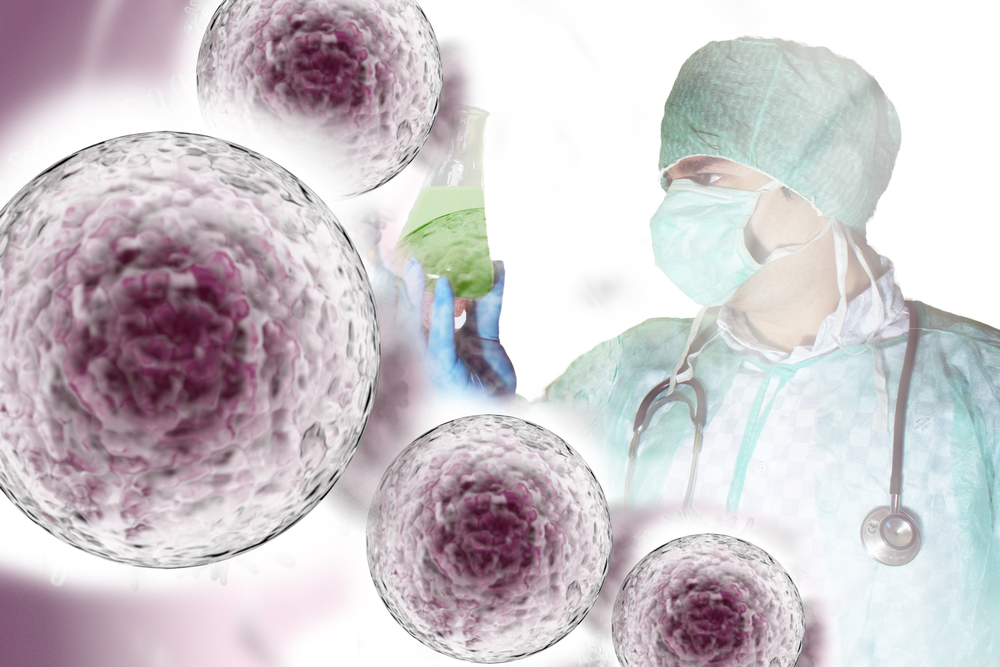Scientists Explore New Way to Generate Stem Cell-like Cells for CF Therapy
Written by |

Canadian researchers developed a safer and more cost-effective method for transforming differentiated adult cells into stem-like cells, a process known as induced pluripotent stem cells (iPS). The new method, called interrupted reprogramming, already showed promise as a potential cell therapy replacement in a mouse model with cystic fibrosis.
The study “Generation of Induced Progenitor-like Cells from Mature Epithelial Cells Using Interrupted Reprogramming” was published in the journal Stem Cell Reports.
“A major block in the critical path of regenerative medicine is the lack of suitable cells to restore function or repair damage,” Thomas Waddell, MD, PhD, co-senior author of the study, said in a press release. Waddell is a thoracic surgeon at the University of Toronto,
“Our approach starts with purifying the cell type we want and then manipulating it to give those cell types characteristics of progenitor cells, which can grow rapidly but produce only a few cell types. As such, it is much more direct, more rapid, and the batches of cells are more purified,” Waddell said.
For generating iPS cells, scientists need to reprogram adult, differentiated cells — such as skin cells — into an undifferentiated, embryonic stem-cell-like state. Once they have enough numbers, these cells can be converted into any specialized cell within our body.
Since its discovery, the iPS method has gathered much interest as it meant that scientists can generate any cell type from an easily obtainable mature skin cell. This has great implications for how patients with different diseases, such as those in need of a transplant, are treated. Using patients’ own cells and converting them to an iPS state may overcome the risk of immune rejection seen with current transplantation methods.
The protocols currently used for generating iPS, however, are hampered by the cells’ low yield and purity. Also, patient-tailored pluripotent cells remain an expensive and time-consuming endeavor.
“We have pursued cell therapy for lung diseases for many years,” Waddell said. “One key issue is how to get the right type of cells and lots of them. To avoid rejection, we need to use cells from the actual patient.”
The teams of Waddell and co-senior study author Andras Nagy, MD, PhD, have developed a modified version of the iPS protocol that they call interrupted reprogramming strategy using adult mouse respiratory tract cells, called “Club cells.”
They initiated the iPS protocol with the differentiate Club cells but interrupted it early, so the cells didn’t reach a full pluripotent state where they become completely undifferentiated, without an “identity.” Instead, they remained as induced progenitor-like (iPL) cells, still committed to a certain identity or lineage.
In this state, researchers found, the cells’ proliferation was more controlled than that of iPS cells.
“The reprogramming process had previously been considered as an all-or-none process,” said Waddell. “We were surprised to the extent that it can be fine-tuned by the timing and dosing of the drug used to activate the reprogramming factors. That is interesting as it gives lots of opportunities for control, but it does mean we have lots of work to do to get it right.”
The Club-iPL cells generated with the interrupted reprogramming strategy retained a memory of their origin and so they differentiated into several cells of the respiratory track — the Club cells and goblet cells, but also lung epithelial cells.
In cystic fibrosis, epithelial lung cells express a defective CFTR protein that causes the disease. Researchers introduced the Club-iPL cells into a mouse model of the disease and observed that the cells thrived in the respiratory tract of the animals and restored the normal CFTR protein levels. Importantly, the cells didn’t give rise to any tumors.
These findings highlight the potential use of this new method for use as cell therapy in cystic fibrosis and several other diseases.
“To create specialized cell types for use in cell therapy requires only that we insert the genes (or use non-transgenic approaches) and then test the drug dose and timing required for each cell type and each patient, so it should be relatively scalable at low cost compared to other approaches using each patient’s own cells,” Waddell said. “It should be very easy for other labs to use a similar approach.”
Researchers plan to test the method with human cells and determine if it would be safe to use them in patients.
“The study is a proof of principle, the way this concept may ultimately be used in humans could be different, and it will be many years before this will be attempted in humans,” Waddell concluded.






